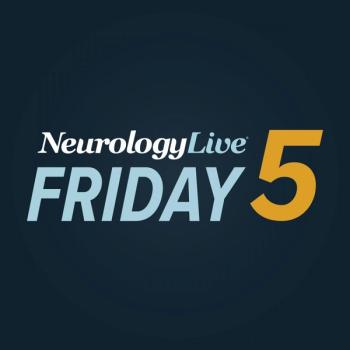
Orexin-Targeting Agent TAK-861 Meets All End Points in Phase 3 FirstLight and RadiantLight Studies
Key Takeaways
- Oveporexton met all primary and secondary endpoints in phase 3 studies, showing significant improvements in NT1 symptoms.
- The investigational agent demonstrated a well-tolerated safety profile, with common adverse events including insomnia and urinary urgency.
Takeda reveals promising phase 3 results for oveporexton, a potential breakthrough treatment for narcolepsy type 1, targeting excessive daytime sleepiness.
Takeda has announced positive data from its phase 3 FirstLight (NCT06470828) and RadiantLight (NCT06505031) studies of patients with narcolepsy type 1 (NT1). The results showed that investigational oveporexton (TAK-861) met all its primary and secondary end points. Based on these findings, the company plans to submit a new drug application to the FDA for oveporexton, an oral orexin receptor 2 (OX2R)–selective agonist, as a treatment for NT1.
FirstLight and RadiantLight, 2 multicenter, placebo-controlled studies, featured 168 and 105 patients with NT1, respectively, using change in Maintenance Wakefulness Test (MWT) as the primary end point. Conducted across 19 countries, FirstLight included high-dose, low-dose, and placebo arms, whereas RadiantLight included only high-dose and placebo arms. All told, over the 12-week trials, treatment with oveporexton led to statistically significant improvements in excessive daytime sleepiness, reflected in MWT change, relative to placebo (P <.001).
At the conclusion of the 12-week studies, oveporexton also showed statistically significant improvements in secondary outcomes, which included change in Epworth Sleepiness Scale and Weekly Cataplexy Rate (both P <.001). In addition, treatment with the investigational agent led to reported enhancements in ability to maintain attention, overall quality of life, and daily life functions, further supporting the drug’s development.
"We are thrilled to reach this pivotal milestone for the oveporexton program. Oveporexton is a testament to Takeda’s strength in discovering and developing a potential new class of medicines for difficult to treat diseases such as narcolepsy type 1,” Christophe Weber, president and chief executive officer at Takeda, said in a statement.1 "Our leadership in orexin biology and building a multi-asset orexin franchise with transformative potential will position Takeda for long-term future growth."
To date, there are no FDA-approved OX2R agonists for the treatment of NT1; however, the drug development landscape has been growing rapidly in recent years. Among them is oveporexton, formally known as TAK-861, which selectively stimulates the OX2R to restore signaling and address the underlying orexin deficiency found in NT1. The therapy also activates OX2 receptors to enhance wakefulness and suppress abnormal REM sleep-like events, such as cataplexy, targeting both daytime and nighttime symptoms.
According to Takeda, oveporexton demonstrated a well-tolerated safety profile in the phase 3 studies, which mirrored what had been previously observed. The most common adverse events (AEs) included insomnia and urinary urgency and frequency, with no serious treatment-related AEs found. Of note, more than 95% of the study participants completed their treatment cycles and moved on to the ongoing long-term extension.
READ MORE:
"The comprehensive assessments from our Phase 3 studies build on the transformative results we saw with our Phase 2b study with most participants reaching normative ranges and reporting clinically meaningful improvement across a broad range of symptoms at the end of the 12-week treatment period,” Andy Plump, MD, PhD, president of research and development at Takeda, said in a statement.1 "The positive results also reinforce the continued momentum for our late-stage pipeline, which we believe will deliver value to the patients we serve around the world."
As Plump alluded, oveporexton showcased promise in a phase 2b study (NCT05687903)
The investigational agent also showed promising data across secondary end points as well. After 8 weeks of treatment, researchers reported mean ESS total score changes of –8.9, –13.8, –12.8, –11.3, and –2.5, respectively (adjusted P ≤.004 for all comparisons vs placebo). In addition, the weekly incidence of cataplexy at week 8 was 4.24, 3.14, 2.48, 5.89, and 8.76, respectively (adjusted P <.05 for 2 mg twice daily and 2 mg followed by 5 mg daily vs. placebo), favoring oveporexton.
The pipeline for OX2R-targeting treatments has grown in recent years, but oveporexton remains the most advanced thus far. They include Aklermes ALKS 2680, which is set to enter phase 2, and Centessa Pharmaceuticals’ ORX142, which just started phase 1 studies. Centessa also is developing ORX750, a selective OX2R agonist, as a treatment for NT1, narcolepsy type 2, and idiopathic hypersomnia.
REFERENCES
1. Takeda announces positive results from two pivotal phase 3 studies of oveporexton (TAK-861) in narcolepsy type 1. News release. Takeda. July 14, 2025. Accessed July 14, 2025. https://www.takeda.com/newsroom/newsreleases/2025/positive-results-phase-3-oveporexton-narcolepsy-type-1/
2. Dauvilliers Y, Plazzi G, Mignot E, et al. Oveporexton, an oral orexin receptor 2-selective agonist, in narcolepsy type 1. N Engl J Med. 2025;392(19):1905-1916. doi:10.1056/NEJMoa2405847
Newsletter
Keep your finger on the pulse of neurology—subscribe to NeurologyLive for expert interviews, new data, and breakthrough treatment updates.


































